That’s A Wrap! Thank You For All The Great Questions.
That’s a wrap! Thank you for all the great questions.
Keep up with Nick’s journey on and off the station by following him on Twitter at @AstroHague. Follow NASA on Tumblr for your regular dose of space!
More Posts from Nasa and Others
What’s Up for September?

Stargazing and looking up into the night sky is always a fun thing to do. This month, it will be especially exciting because there will be a total eclipse of a supermoon, plus the opportunity to see planets and the late-summer Milky Way!
What is a supermoon?

A supermoon is a new or full moon that occurs when it is at, or near its closest approach to Earth in a given orbit. There are usually 4 to 6 supermoons every year.
Observers can view the total eclipse on September 27, starting at 10:11 p.m. EDT until 11:23 p.m. This event will be visible in North and South America, as well as Europe and Africa. So make sure to mark your calendars!

This month, you will also be able to see the planets! Look for Mercury, Saturn, Pluto and Neptune in the evening sky. Uranus and Neptune at midnight, and Venus, Mars and Jupiter in the pre-dawn sky.

Finally, if you’re able to escape to a dark location, you might be able to see a great view of our Milky Way!
So, make sure to get outside this month and take a look at everything our night sky has to offer.

Make sure to follow us on Tumblr for your regular dose of space: http://nasa.tumblr.com
What is the real raw advice for someone wanting to pursue a career at NASA?
How Do Space Telescopes Break Down Light?
Space telescopes like Hubble and our upcoming James Webb Space Telescope use light not only to create images, but can also break light down into individual colors (or wavelengths). Studying light this way can give us a lot of detail about the object that emitted that light. For example, studying the components of the light from exoplanets can tell us about its atmosphere’s color, chemical makeup, and temperature. How does this work?
Remember the primary colors you learned about in elementary school?
Those colors are known as the pigment or subtractive colors. Every other color is some combination of the primary colors: red, yellow, and blue.

Light also has its own primary colors, and they work in a similar way. These colors are known as additive or light colors.
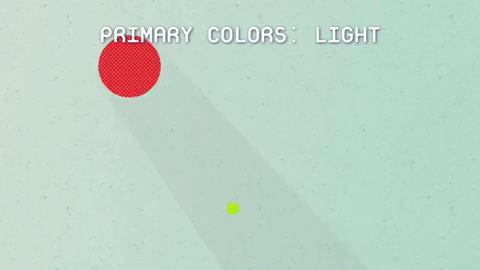
TVs make use of light’s colors to create the pictures we see. Each pixel of a TV screen contains some amount of red, green and blue light. The amount of each light determines the overall color of the pixel. So, each color on the TV comes from a combination of the primary colors of light: red, green and blue.

Space telescope images of celestial objects are also a combination of the colors of light.
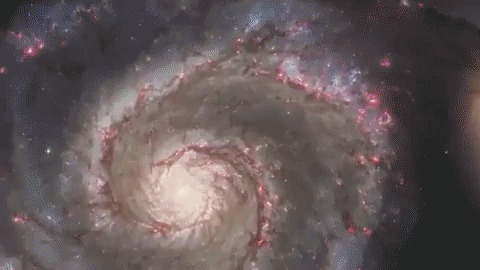
Every pixel that is collected can be broken down into its base colors. To learn even more, astronomers break the red, green and blue light down into even smaller sections called wavelengths.
This breakdown is called a spectrum.

With the right technology, every pixel of light can also be measured as a spectrum.

Images show us the big picture, while a spectrum reveals finer details. Astronomers use spectra to learn things like what molecules are in planet atmospheres and distant galaxies.
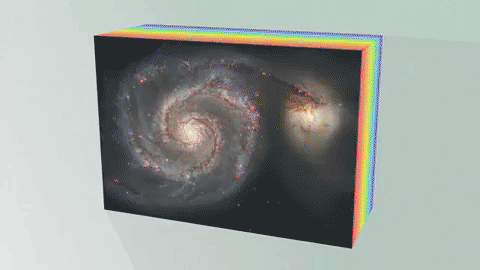
An Integral Field Unit, or IFU, is a special tool on the James Webb Space Telescope that captures images and spectra at the same time.

The IFU creates a unique spectrum for each pixel of the image the telescope is capturing, providing scientists with an enormous amount of valuable, detailed data. So, with an IFU we can get an image, many spectra and a better understanding of our universe.
Watch the full video where this method of learning about planetary atmospheres is explained:
The James Webb Space Telescope is our upcoming infrared space observatory, which will launch in 2021. It will spy the first galaxies that formed in the universe and shed light on how galaxies evolve, how stars and planetary systems are born and tell us about potentially habitable planets around other stars.
To learn more about NASA’s James Webb Space Telescope, visit the website, or follow the mission on Facebook, Twitter and Instagram.
Text and graphics credit: Space Telescope Science Institute
Make sure to follow us on Tumblr for your regular dose of space: http://nasa.tumblr.com.
The Past, Present and Future of Exploration on Mars
Today, we’re celebrating the Red Planet! Since our first close-up picture of Mars in 1965, spacecraft voyages to the Red Planet have revealed a world strangely familiar, yet different enough to challenge our perceptions of what makes a planet work.

You’d think Mars would be easier to understand. Like Earth, Mars has polar ice caps and clouds in its atmosphere, seasonal weather patterns, volcanoes, canyons and other recognizable features. However, conditions on Mars vary wildly from what we know on our own planet.
Join us as we highlight some of the exploration on Mars from the past, present and future:
PAST
Viking Landers

Our Viking Project found a place in history when it became the first U.S. mission to land a spacecraft safely on the surface of Mars and return images of the surface. Two identical spacecraft, each consisting of a lander and an orbiter, were built. Each orbiter-lander pair flew together and entered Mars orbit; the landers then separated and descended to the planet’s surface.

Besides taking photographs and collecting other science data, the two landers conducted three biology experiments designed to look for possible signs of life.
Pathfinder Rover

In 1997, Pathfinder was the first-ever robotic rover to land on the surface of Mars. It was designed as a technology demonstration of a new way to deliver an instrumented lander to the surface of a planet. Mars Pathfinder used an innovative method of directly entering the Martian atmosphere, assisted by a parachute to slow its descent and a giant system of airbags to cushion the impact.

Pathfinder not only accomplished its goal but also returned an unprecedented amount of data and outlived its primary design life.
PRESENT
Spirit and Opportunity

In January 2004, two robotic geologists named Spirit and Opportunity landed on opposite sides of the Red Planet. With far greater mobility than the 1997 Mars Pathfinder rover, these robotic explorers have trekked for miles across the Martian surface, conducting field geology and making atmospheric observations. Carrying identical, sophisticated sets of science instruments, both rovers have found evidence of ancient Martian environments where intermittently wet and habitable conditions existed.

Both missions exceeded their planned 90-day mission lifetimes by many years. Spirit lasted 20 times longer than its original design until its final communication to Earth on March 22, 2010. Opportunity continues to operate more than a decade after launch.
Mars Reconnaissance Orbiter

Our Mars Reconnaissance Orbiter left Earth in 2005 on a search for evidence that water persisted on the surface of Mars for a long period of time. While other Mars missions have shown that water flowed across the surface in Mars’ history, it remained a mystery whether water was ever around long enough to provide a habitat for life.

In addition to using the rover to study Mars, we’re using data and imagery from this mission to survey possible future human landing sites on the Red Planet.
Curiosity

The Curiosity rover is the largest and most capable rover ever sent to Mars. It launched November 26, 2011 and landed on Mars on Aug. 5, 2012. Curiosity set out to answer the question: Did Mars ever have the right environmental conditions to support small life forms called microbes?

Early in its mission, Curiosity’s scientific tools found chemical and mineral evidence of past habitable environments on Mars. It continues to explore the rock record from a time when Mars could have been home to microbial life.
FUTURE
Space Launch System Rocket

We’re currently building the world’s most powerful rocket, the Space Launch System (SLS). When completed, this rocket will enable astronauts to begin their journey to explore destinations far into the solar system, including Mars.
Orion Spacecraft

The Orion spacecraft will sit atop the Space Launch System rocket as it launches humans deeper into space than ever before. Orion will serve as the exploration vehicle that will carry the crew to space, provide emergency abort capability, sustain the crew during the space travel and provide safe re-entry from deep space return velocities.
Mars 2020

The Mars 2020 rover mission takes the next step in exploration of the Red Planet by not only seeking signs of habitable conditions in the ancient past, but also searching for signs of past microbial life itself.

The Mars 2020 rover introduces a drill that can collect core samples of the most promising rocks and soils and set them aside in a “cache” on the surface of Mars. The mission will also test a method for producing oxygen from the Martian atmosphere, identify other resources (such as subsurface water), improve landing techniques and characterize weather, dust and other potential environmental conditions that could affect future astronauts living and working on the Red Planet.

For decades, we’ve sent orbiters, landers and rovers, dramatically increasing our knowledge about the Red Planet and paving the way for future human explorers. Mars is the next tangible frontier for human exploration, and it’s an achievable goal. There are challenges to pioneering Mars, but we know they are solvable.
To discover more about Mars exploration, visit: https://www.nasa.gov/topics/journeytomars/index.html
Make sure to follow us on Tumblr for your regular dose of space: http://nasa.tumblr.com
Last Glacier Standing in Venezuela
In 1910, glaciers covered at least 4 square miles (10 square km) of the mountainous region of northwestern Venezuela. Today, less than one percent of that ice remains, and all of it is locked up in one glacier. The ongoing retreat of Humboldt Glacier—Venezuela’s last patch of perennial ice—means that the country could soon be glacier-free.

The glacier is in the highest part of the Andes Mountains, on a slope at nearly 16,000 feet. A cold and snowy climate at high elevations is key for glaciers to exist in the tropics. Most of Earth’s tropical glaciers are found in the Andes, which runs through Venezuela, Colombia, Ecuador, Peru and Bolivia. But warming air temperatures have contributed to their decline, including Humboldt Glacier.
The relatively recent changes to Humboldt are evident in these images, acquired on Jan. 20, 1988, by the United States Geological Survey’s Landsat 5 and on Jan. 6, 2015, by Landsat 8. The images are false-color to better differentiate between areas of snow and ice (blue), land (brown) and vegetation (green).
Scientists are trying to understand how long Humboldt will remain. One said: “Let’s call it no more than 10 to 20 years.”
Read more: https://go.nasa.gov/2NuYcg6
Rocket Fuel in Her Blood: The Story of JoAnn Morgan
As the Apollo 11 mission lifted off on the Saturn V rocket, propelling humanity to the surface of the Moon for the very first time, members of the team inside Launch Control Center watched through a window.
The room was crowded with men in white shirts and dark ties, watching attentively as the rocket thrust into the sky. But among them sat one woman, seated to the left of center in the third row in the image below. In fact, this was the only woman in the launch firing room for the Apollo 11 liftoff.

This is JoAnn Morgan, the instrumentation controller for Apollo 11. Today, this is what Morgan is most known for. But her career at NASA spanned over 45 years, and she continued to break ceiling after ceiling for women involved with the space program.
“It was just meant to be for me to be in the launching business,” she says. “I’ve got rocket fuel in my blood.”

Morgan was inspired to join the human spaceflight program when Explorer 1 was launched into space in 1958, the first satellite to do so from the United States. Explorer 1 was instrumental in discovering what has become known as the Van Allen radiation belt.
“I thought to myself, this is profound knowledge that concerns everyone on our planet,” she says. “This is an important discovery, and I want to be a part of this team. I was compelled to do it because of the new knowledge, the opportunity for new knowledge.”

The opportunity came when Morgan spotted an advertisement for two open positions with the Army Ballistic Missile Agency. The ad listed two Engineer’s Aide positions available for two students over the summer.
“Thank God it said ‘students’ and not ‘boys’” says Morgan, “otherwise I wouldn’t have applied.”
After Morgan got the position, the program was quickly rolled into a brand-new space exploration agency called NASA. Dr. Kurt Debus, the first director of Kennedy Space Center (KSC), looked at Morgan’s coursework and provided Morgan with a pathway to certification. She was later certified as a Measurement and Instrumentation Engineer and a Data Systems Engineer.

There was a seemingly infinite amount of obstacles that Morgan was forced to overcome — everything from obscene phone calls at her station to needing a security guard to clear out the men’s only restroom.
“You have to realize that everywhere I went — if I went to a procedure review, if I went to a post-test critique, almost every single part of my daily work — I’d be the only woman in the room,” reflects Morgan. “I had a sense of loneliness in a way, but on the other side of that coin, I wanted to do the best job I could.”

To be the instrumentation controller in the launch room for the Apollo 11 liftoff was as huge as a deal as it sounds. For Morgan, to be present at that pivotal point in history was ground-breaking: “It was very validating. It absolutely made my career.”

Much like the Saturn V rocket, Morgan’s career took off. She was the first NASA woman to win a Sloan Fellowship, which she used to earn a Master of Science degree in management from Stanford University in California. When she returned to NASA, she became a divisions chief of the Computer Systems division.

From there, Morgan excelled in many other roles, including deputy of Expendable Launch Vehicles, director of Payload Projects Management and director of Safety and Mission Assurance. She was one of the last two people who verified the space shuttle was ready to launch and the first woman at KSC to serve in an executive position, associate director of the center.

To this day, Morgan is still one of the most decorated women at KSC. Her numerous awards and recognitions include an achievement award for her work during the activation of Apollo Launch Complex 39, four exceptional service medals and two outstanding leadership medals. In 1995, she was inducted into the Florida Women's Hall of Fame.
After serving as the director of External Relations and Business Development, she retired from NASA in August 2003.

Today, people are reflecting on the 50th anniversary of Apollo 11, looking back on photos of the only woman in the launch firing room and remembering Morgan as an emblem of inspiration for women in STEM. However, Morgan’s takeaway message is to not look at those photos in admiration, but in determination to see those photos “depart from our culture.”
“I look at that picture of the firing room where I’m the only woman. And I hope all the pictures now that show people working on the missions to the Moon and onto Mars, in rooms like Mission Control or Launch Control or wherever — that there will always be several women. I hope that photos like the ones I’m in don’t exist anymore.”

Follow Women@NASA for more stories like this one, and make sure to follow us on Tumblr for your regular dose of space: http://nasa.tumblr.com.

Digital Creators: Apply to Watch Astronauts Launch to Space with NASA
Do you spend a lot of time online? Would you like to see our next crew of astronauts lift off to the International Space Station?
We're looking for digital content creators of all backgrounds to join us at Kennedy Space Center in Florida for our Crew-6 mission to the space station, set to lift off no earlier than Sunday, Feb. 26. Applications close Friday, Jan. 27 at 3 p.m. EST (2000 UTC)—we'd love to see you there! Apply now.
Can't make this one? Click here to stay updated about future opportunities.
Solar System: Things to Know This Week
Has Cassini inspired you? Learn more about dwarf planet Ceres, get the latest images from the Keck Observatory and more!

1. Has Cassini Inspired You?
During nearly two decades in space, Cassini has been a source of inspiration to many. Has Cassini inspired you? Upload your artwork, photos, poems or songs to the social media platform of your choice, such as Instagram, YouTube, Facebook, Twitter or others. Tag it #CassiniInspires. Or, send it directly to: cassinimission@jpl.nasa.gov. We'll highlight some of the creations on this page. See examples and details at: saturn.jpl.nasa.gov/mission/cassiniinspires/

2. Dawn’s Shines a Light on Ceres
Our Dawn mission has found evidence for organic material on Ceres, a dwarf planet and the largest body in the main asteroid belt between Mars and Jupiter. Learn more: solarsystem.nasa.gov/news/2017/02/17/dawn-discovers-evidence-for-organic-material-on-ceres

3. Into the Vortex
A new device called the vortex coronagraph was recently installed inside NIRC2 (Near Infrared Camera 2) at the W.M. Keck Observatory in Hawaii and has delivered its first images, showing a ring of planet-forming dust around a star, and separately, a cool, star-like body, called a brown dwarf, lying near its companion star.
4. Enceladus: Cassini Cracks the Code of the Icy Moon
A puzzling sensor reading transformed our Cassini Saturn mission and created a new target in the search for habitable worlds beyond Earth, when on Feb. 17, 2005, Cassini made the first-ever close pass over Saturn’s moon. Since our two Voyager spacecraft made their distant flybys of Enceladus about 20 years prior, scientists had anticipated the little moon would be an interesting place to visit. Enceladus is bright white -- the most reflective object in the solar system, in fact -- and it orbits in the middle of a faint ring of dust-sized ice particles known as Saturn’s E ring. Scientists speculated ice dust was being kicked off its surface somehow. But they presumed it would be, essentially, a dead, airless ball of ice.
What Cassini saw didn't look like a frozen, airless body. Instead, it looked something like a comet that was actively emitting gas. The magnetometer detected that Saturn’s magnetic field, which envelops Enceladus, was perturbed above the moon's south pole in a way that didn't make sense for an inactive world. Could it be that the moon was actively replenishing gases it was breathing into space? Watch the video.

5. Descent Into a Frozen Underworld
Our planet's southernmost active volcano reaches 12,448 feet (3,794 meters) above Ross Island in Antarctica. It's a good stand-in for a frozen alien world, the kind we want to send robots to someday. Learn more: solarsystem.nasa.gov/news/2017/02/13/descent-into-a-frozen-underworld
Discover the full list of 10 things to know about our solar system this week HERE.
Follow us on Tumblr for your regular dose of space: http://nasa.tumblr.com
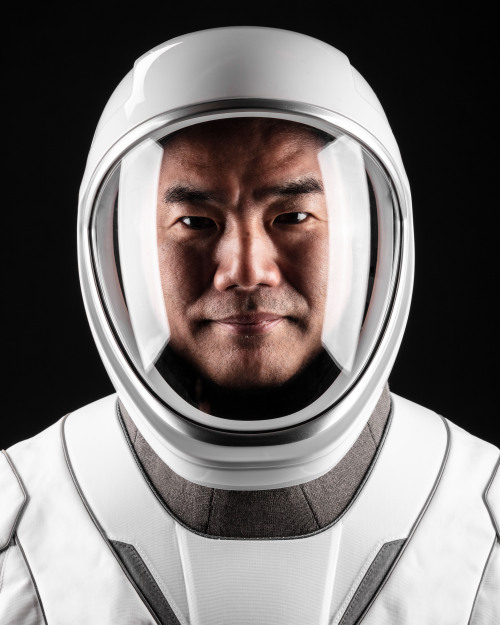
NASA Spotlight: Astronaut Soichi Noguchi
Soichi Noguchi was selected as an astronaut with the Japan Aerospace Exploration Agency in 1996. A native of Yokohama, Kanagawa, he is currently a mission specialist for NASA’s SpaceX Crew-1 launch taking flight to the International Space Station on Nov. 14. Soichi will be the first international crewmember on Crew Dragon and the first international partner astronaut to fly aboard three types of orbital spacecraft – the U.S. space shuttle, the Russian Soyuz, and now the SpaceX Crew Dragon! Talk about impressive. He received a B.S. in Aeronautical Engineering in 1989, master's degree in Aeronautical Engineering in 1991, Doctor of Philosophy in Advanced Interdisciplinary Studies in 2020, all from the University of Tokyo.
Soichi took time from preparing for his historic mission to answer questions about his life and career:
You recently earned a doctorate in philosophy. What made you do it?
After my second flight, I started this research about your sensory system in zero gravity. I used a my own personal video, which I took during my last two flights at the International Space Station. I had a lot of interesting discussions amongst young professionals and students at the University of Tokyo about the research. It was a fun experience – but I would not do it again!
Space is a risky business. Why do it?
Space IS definitely a risky business. But the reward is higher than the risk so that’s why we take it.
Do you have a message for boys and girls in Japan who are interested in science and engineering?
Three words: Space. Is. Waiting.

Aside from mission objectives and tasks, what’s a personal goal for this mission?
We have a lot of interesting missions to do, but my personal goal is to return home with lots of fun stories.

What was it like to get the phone call to become an astronaut?
It was 25 years ago, but I still remember the voice vividly. I got a call from Dr. Mamoru Mohri, the very first JAXA astronaut, and he said “Welcome to the Astronaut Corps.” When I got the call to be part of the Crew-1 mission, I was a lot less nervous than when I was assigned to my first mission, but the excitement remains the same.
Can you describe your crew mate Mike Hopkins in one sentence?
He is a natural leader that takes care of the team really well, and he’s fun to play around with.

Star Trek or Star Wars?
Star Wars… just because!

Can you share your favorite photo or video that you took in space?
My favorite photo is Mount Fuji because I see the mountain almost every day when I was a child. It’s definitely breathtaking to see Mount Fuji from space.
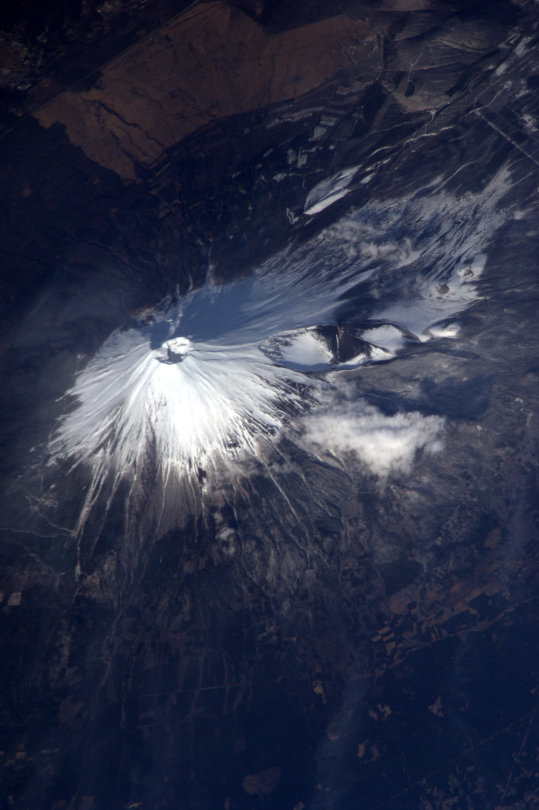
What personal items did you decide to pack for launch and why?
I have lots of family photos, and I would put it inside my sleep station. Definitely one of the most challenging things about spaceflight is not experiencing zero gravity, not the rocket, but time away from family.
How would you describe spacewalking outside the space station?
It’s an excursion. The view of the Earth is just breathtaking because you are just one glass away from the vacuum of space. There’s nothing between you and Earth.

What are you most excited about for the future of human space exploration?
I would say I’m most excited for interplanetary travel to become more common so that the school kids can go to Mars on their field trip.
What would you say to someone looking to follow in your footsteps?
Don’t worry, be happy!
How has spaceflight evolved since your first launch and stay aboard the International Space Station in 2005?
This is definitely an exciting moment. We’re starting to see more players in the game. SpaceX is the frontrunner, but soon we’ll see Boeing, Sierra Nevada and Axiom. So the International Space Station will soon have more players involved, and it will be a lot more fun!
Thank you for your time, Soichi, and good luck on your historic mission! Get to know a bit more about Soichi and his NASA astronaut crew mates Victor Glover, Michael Hopkins, and Shannon Walker in the video above.
Watch LIVE launch coverage beginning at 3:30 p.m. EST on Nov. 14 HERE.
Make sure to follow us on Tumblr for your regular dose of space: http://nasa.tumblr.com
Solar System: Things to Know This Week
Earth is the ultimate ocean planet (that we know of), but it turns out that our solar system has water in some surprising places, with five ocean-bearing moons and potentially several more worlds with their own oceans.

1. The Original "Alien Ocean"
Our Galileo spacecraft (1989-2003) detected the first evidence of an ocean beyond Earth under the ice of Jupiter's icy moon Europa.

2. Lost Oceans
There are signs that Mars and Venus once had oceans, but something catastrophic may have wiped them out. Earth's natural force field -- our magnetosphere -- acts like shield against the erosive force of the solar wind.

3. Earth, the Original Ocean World
The search for life beyond Earth relies, in large part, on understanding our home planet. Among the newest Earth ocean explorers us the Cyclone Global Navigation Satellite System, or CYGNSS--a constellation of microsatellites that will make detailed measurements of wind speeds over Earth's oceans to help understand hurricanes. The spacecraft have moved into their science operations phase.

4. Sister Ships
It's fitting the first mission to explore an alien ocean is named in honor of fast-sailing clipper ships of old. Our Europa Clipper spacecraft will seek signs of habitability on Jupiter's moon Europa.

5. Game Changer
Scientists expected Saturn's moon Enceladus to be a tiny, solid chunk of ice and rock. But, not long after arriving at Saturn, our Cassini spacecraft made a series of incremental discoveries, eventually confirming that a global subsurface ocean is venting into space, with signs of hydrothermal activity.

6. Why Ocean Worlds Matter
"The question of whether or not life exists beyond Earth, the question of whether or not biology works beyond our home planet, is one of humanity's oldest and yet unanswered questions. And for the first time in the history of humanity, we have the tools and technology and capability to potentially answer this question. And, we know where to go to find it. Jupiter's ocean world Europa." - Kevin Hand, NASA Astrobiologist

7. More Alien Oceans
Scientists think Jupiter's giant moons Ganymede and Callisto also hide oceans beneath their surfaces. Elsewhere in the solar system, scientists hope to look for hidden oceans on far-flung worlds from Ceres in the main asteroid belt to Pluto in the Kuiper Belt.

8. Cold Faithful(s)?
Thanks to our Cassini orbiter we know the tiny moon Enceladus is venting its ocean into space in a towering, beautiful plume. The Hubble Space Telescope also has seen tantalizing hints of plumes on Jupiter's moon Europa. Plumes are useful because they provide samples of ocean chemistry for oceans that could be miles below the surface and difficult for spacecraft to reach. It's like they're giving out free samples!

9. Titanic Seas and Ocean
Saturn's moon Titan not only has liquid hydrocarbon seas on its surface. It also shows signs of a global, subsurface saltwater ocean--making the giant moon a place to possibly look for life as we know it and life as we don't know it ... yet.

10. Oceans Beyond
Several of the thousands of planets discovered beyond our solar system orbit their stars in zones where liquid surface water is possible--including Proxima-b, a rocky planet orbiting the star nearest to our own.
BONUS: Adopt a bit of YOUR Ocean World
We invite everyone to help us celebrate Earth Day 2017 by virtually adopting a piece of Earth as seen from space. Your personalized adoption certificate will feature data from our Earth-observing satellites for a randomly assigned location, much of it ocean (it is 70 percent of the Earth's surface after all!). Print it and share it, then explore other locations with our interactive map and get even more Earth science data from NASA's Worldview website.
Visit go.nasa.gov/adopt to adopt your piece of the planet today!
Discover more lists of 10 things to know about our solar system HERE.
Make sure to follow us on Tumblr for your regular dose of space: http://nasa.tumblr.com
-
 watch reblogged this · 1 year ago
watch reblogged this · 1 year ago -
 john-erby liked this · 3 years ago
john-erby liked this · 3 years ago -
 2reputationpegacorns liked this · 3 years ago
2reputationpegacorns liked this · 3 years ago -
 bethelnie-blog liked this · 5 years ago
bethelnie-blog liked this · 5 years ago -
 disastrousfeline liked this · 5 years ago
disastrousfeline liked this · 5 years ago -
 i-am-weird1 liked this · 5 years ago
i-am-weird1 liked this · 5 years ago -
 61peepsonaroad liked this · 5 years ago
61peepsonaroad liked this · 5 years ago -
 just-peachy-posts liked this · 5 years ago
just-peachy-posts liked this · 5 years ago -
 shailendra65631 reblogged this · 5 years ago
shailendra65631 reblogged this · 5 years ago -
 shailendra65631 liked this · 5 years ago
shailendra65631 liked this · 5 years ago -
 cherryobvious liked this · 5 years ago
cherryobvious liked this · 5 years ago -
 adt-space reblogged this · 5 years ago
adt-space reblogged this · 5 years ago -
 markivnaayardanahc liked this · 5 years ago
markivnaayardanahc liked this · 5 years ago -
 smol-bean-dragon-hoard liked this · 5 years ago
smol-bean-dragon-hoard liked this · 5 years ago -
 ahdriking liked this · 5 years ago
ahdriking liked this · 5 years ago -
 kimbermcleod reblogged this · 5 years ago
kimbermcleod reblogged this · 5 years ago -
 thoughtfulauthorpandaoperator liked this · 5 years ago
thoughtfulauthorpandaoperator liked this · 5 years ago -
 cactusguards reblogged this · 5 years ago
cactusguards reblogged this · 5 years ago -
 cactusguards liked this · 5 years ago
cactusguards liked this · 5 years ago -
 mohamedriyas liked this · 5 years ago
mohamedriyas liked this · 5 years ago -
 miguelvicentevidal liked this · 5 years ago
miguelvicentevidal liked this · 5 years ago -
 whitecatnatalie liked this · 5 years ago
whitecatnatalie liked this · 5 years ago -
 mariacandela705 liked this · 5 years ago
mariacandela705 liked this · 5 years ago -
 wissaaaaaaam reblogged this · 5 years ago
wissaaaaaaam reblogged this · 5 years ago -
 juanchinsape liked this · 5 years ago
juanchinsape liked this · 5 years ago -
 fulldonkeybearbasketball-blog liked this · 5 years ago
fulldonkeybearbasketball-blog liked this · 5 years ago -
 isabella-rose-robinson liked this · 5 years ago
isabella-rose-robinson liked this · 5 years ago -
 alexjang09 liked this · 5 years ago
alexjang09 liked this · 5 years ago -
 aki-kalchek-blog liked this · 5 years ago
aki-kalchek-blog liked this · 5 years ago -
 sapphire2dragon liked this · 5 years ago
sapphire2dragon liked this · 5 years ago -
 petersamuelbb-blog liked this · 5 years ago
petersamuelbb-blog liked this · 5 years ago -
 foenixphire liked this · 5 years ago
foenixphire liked this · 5 years ago -
 readinginzerogravity liked this · 5 years ago
readinginzerogravity liked this · 5 years ago -
 alexcc95 liked this · 5 years ago
alexcc95 liked this · 5 years ago -
 stars-that-do-not-give-a-damn liked this · 5 years ago
stars-that-do-not-give-a-damn liked this · 5 years ago -
 erexart liked this · 5 years ago
erexart liked this · 5 years ago -
 hungarianfuck liked this · 5 years ago
hungarianfuck liked this · 5 years ago -
 originaltacopersonapony-blog liked this · 5 years ago
originaltacopersonapony-blog liked this · 5 years ago -
 chaiandchandandi liked this · 5 years ago
chaiandchandandi liked this · 5 years ago -
 theseatree0 reblogged this · 5 years ago
theseatree0 reblogged this · 5 years ago -
 a-scavenger-from-jakku liked this · 5 years ago
a-scavenger-from-jakku liked this · 5 years ago -
 racesharley liked this · 5 years ago
racesharley liked this · 5 years ago
Explore the universe and discover our home planet with the official NASA Tumblr account
1K posts